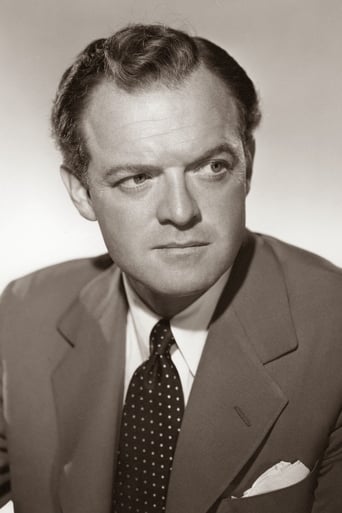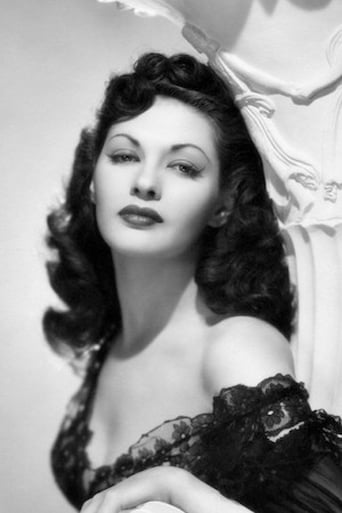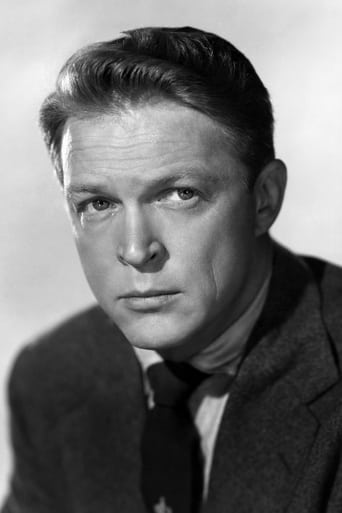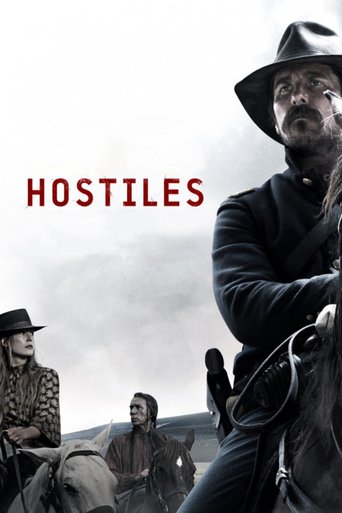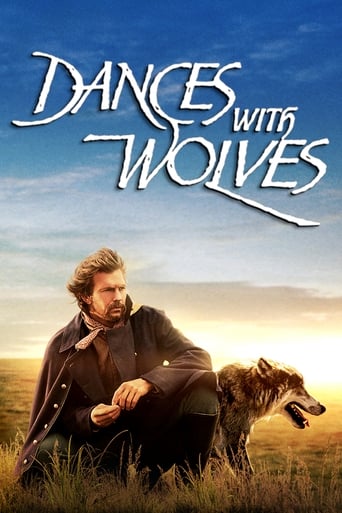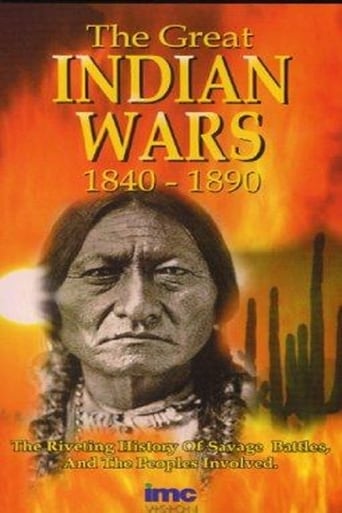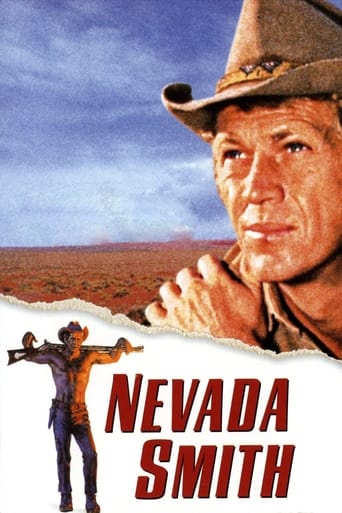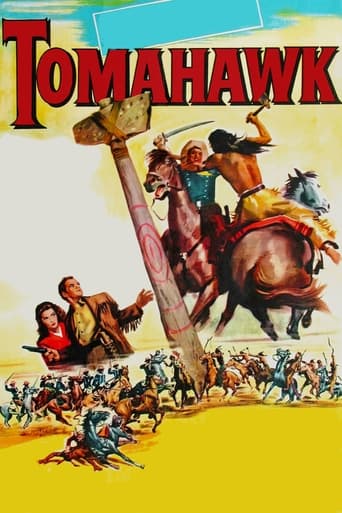
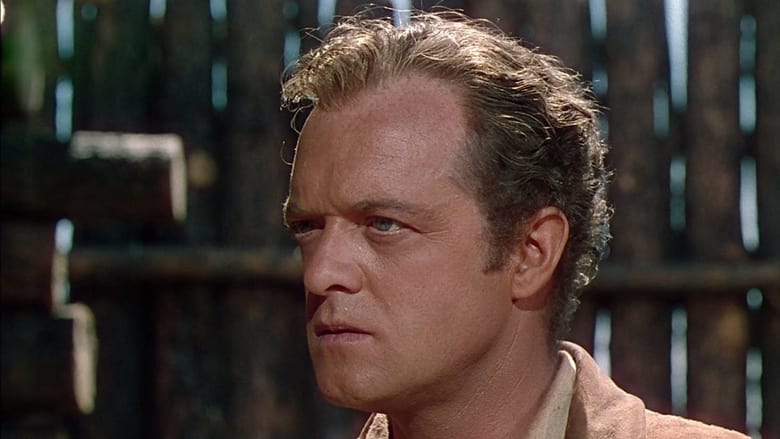
Tomahawk (1951)
In 1866, a new gold discovery and an inconclusive conference force the U.S. Army to build a road and fort in territory ceded by previous treaty to the Sioux...to the disgust of frontier scout Jim Bridger, whose Cheyenne wife led him to see the conflict from both sides. The powder-keg situation needs only a spark to bring war, and violent bigots like Lieut. Rob Dancy are all too likely to provide this. Meanwhile, Bridger's chance of preventing catastrophe is dimmed by equally wrenching personal conflicts. Unusually accurate historically.
Watch Trailer
Cast
Similar titles

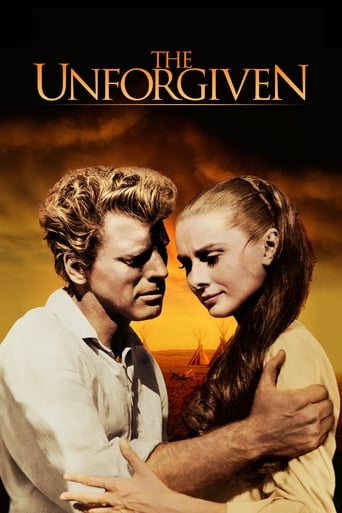
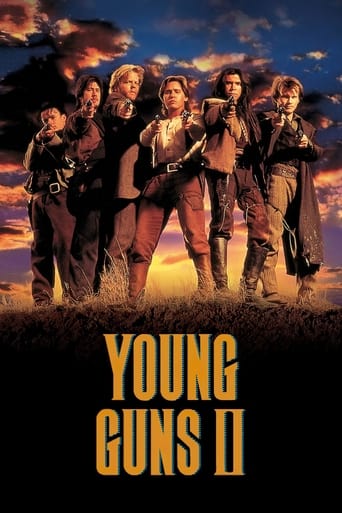
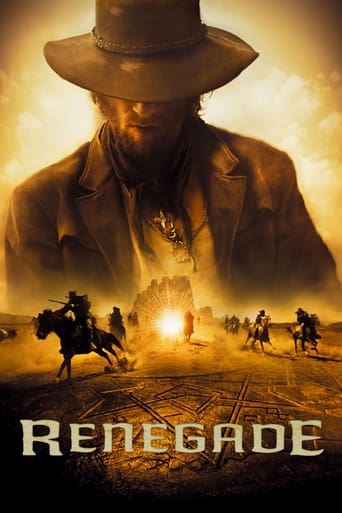
Reviews
Memorable, crazy movie
It's easily one of the freshest, sharpest and most enjoyable films of this year.
The biggest problem with this movie is it’s a little better than you think it might be, which somehow makes it worse. As in, it takes itself a bit too seriously, which makes most of the movie feel kind of dull.
It's a good bad... and worth a popcorn matinée. While it's easy to lament what could have been...
This is an enjoyable and engrossing color Western from 1951. Van Heflin is great as the famed Jim Bridger in this memorable tale of the sometimes bitter conflict between settlers , Calvary and Indians during the 19th Century. Yvonne De Carlo is lovely and entertaining as the female lead, struggling to understand Bridger's seemingly divided loyalties.The photography and color in this movie is top notch, and the film is consistently entertaining and full of plot twists to keep the viewer engrossed. Screen legend Rock Hudson makes an impressive early appearance in this sad but enlightening tale of the struggle of cultures on the Western plains. De Carlos steals the film as the female lead !
Having seen and reviewed several films dealing with various aspects of the Powder River Bozeman Trail(Red Cloud)War of 1866-8, whether or not acknowledged as such, it was refreshing to find a Hollywood cavalry western that was much more of a documentary treatment than these later films. Directed by George Sherman, who specialized in short "B" westerns and other films for Universal, it was mostly shot in the Black Hills of SD, which rather resemble the neighboring Powder River region of WY. Later films that incorporated much more fiction and only dealt with parts of the story include: "The Last Frontier", "The Gun That Won the West" and "The Tall Men".It's true that veteran trapper, explorer, trader and scout Jim Bridger's role in this affair is grossly magnified. The two featured women: Julie(Yvonne De Carlo) and Indian princess Monahseetah(Susan Cabot) are included to soften the otherwise war drama, which lacks any substantial humor or musical interludes. Even veteran comedic character actor Jack Oakie fails to provide much lightening of the drama. Monahseetah, although often in the background as Bridger's girlfriend, hardly says anything in the film. She seems to serve mainly as an impediment to Julie's gradual increasing romantic interest in Bridger. Since Bridger admits to Julie that he doesn't consider Monahseetah his wife, Julie maintains hope that she can nudge Monahseetah aside. But, eventually, it becomes clear that Bridger doesn't ever want a white woman, even with Julie's assets, as a wife. Thus, there is minimal romantic element in the film, with no parting kiss. The women vanish from the last part of the film. This mirrors the real Bridger, who had 3 successive squaws for wives, with no white women. The real Bridger was not a Heflin, in the prime of life, bur rather an old man who would soon retire to his Missouri farm. Unlike some of her films("Frontier Gal", "Buccaneer's Girl") where Yvonne plays a spitfire as well as singer/dancer, she's pretty tame in this flick, although gorgeous, in one of her few color films. Like Shirley Temple, in "Fort Apache", she gets into trouble taking a horse ride out from the fort, against advice.The Fetterman Massacre, considered the greatest defeat suffered by the US army from an Indian encounter before Custer's Last Stand, is included. Lt. Dancy, who participated in this disaster, is cast as Bridger's chief adversary: all around badman, who relishes killing Indians, who tries to rape Julie, and who participated in the previous historical Sand Creek Massacre of a Cheyenne village, including Bridger's wife(not historically true). The screenplay continues with greater success against the Indians in the subsequent historical Hayfield and Wagon Box Canyon fights, after receipt of 1866 issue Springfield single shot breech-loading rifles to replace their obsolete Springfield muskets. These rifles were much quicker to load and more accurate than the muskets, thus negating the Indian's accustomed attack strategy with their mostly short range bows and arrows. This is historically true, and the main point of the subsequent Hollywood film "The Gun That won the West"As Col. Carrington articulates, despite their increasing success against the Indians, the army brass back east decided to abandon the campaign, including the several forts so recently built. However, he doesn't tell the reason for this decision, which was to use the forces involved in this struggle to help protect the transcontinental railroad, recently built across southern Wyoming, from attacks.With Bridger's dominating role in the screenplay and pro-Indian sympathies, It's not surprising that the Indians emerge the ultimate strategic, if not tactical, victors. As Heflin articulates, the Indians were being defeated near the end by the new, far better, army firearms, not by better war tactics. Unlike chiefs such as Sitting Bull and Crazy Horse, Red Cloud eventually went on to lead the inevitable transformation of his people into reservation Indians, and lived into the 20th century, famous among both whites and his people for both his military skills and his leadership in this necessary transformation.My limited experience with Heflin films suggest that he was, as in this one, often cast as a humorless determined loner, who goes against the grain of the groups he was associated with. Examples include:"Santa Fe Trail", and "Tennessee Johnson".John War Eagle, who played Red Cloud, was a Lakota, and played an Indian, often a chief, in quite a few Hollywood and TV westerns.Preston Foster made a believable Col. Carrington, commander of this military operation, although an engineer by background. Although never a big star, his film career stretched back to the dawn of talkies, and would continue.Susan Cabot tried to forget her miserable childhood, spent being shuffled from one foster home to another, by an early marriage and budding careers in music, art and drama. Unfortunately, she disliked her Universal assignments, but eventually found a kindred director in Roger Corman, who provided her with some meaty roles. Unfortunately, she became mentally unstable later in life, and was murdered by her avenging son.I give this film high marks for being a solidly-based western, though not the most entertaining one.
Veteran western director George Sherman's "Tomahawk" qualifies as a predictable but entertaining, Blue coats versus the Redskins horse opera. Van Heflin toplines this Technicolor tale as a savvy cavalry scout, Jim Bridger, who aligns himself with the U.S. Calvary but argues on behalf of the Indians. Bridger has young Native American daughter, but his wife is dead. Universal Pictures forged his 1951 oater in the mold of Delmar Daves' landmark epic "Broken Arrow." The Native Americans aren't just bloodthirsty savages howling for scalps. The Sioux Indians have suffered bitterly at the hands of treacherous whites, and "Tomahawk" presents them from a sympathetic perspective. The Black Hills of South Dakota scenery is rugged but beautiful, and Sherman paces the action so it doesn't wear out its welcome. Despite its lofty sentiments toward the Indians, "Tomahawk" is still a conventional dust raiser. Yvonne De Carlo plays the love interest that hates the heroic scout initially and hangs around a despicable cavalry officer played with villainous verve by Alex Nicol. Look closely and you'll spot a young Rock Hudson as a cavalry corporeal. "Rancho Notorious" scenarist Silvia Richards and "Love Me Tender" scribe Maurice Geraghty incorporate the historically infamous Fetterman massacre where the cavalry are lured into an ambush. Aside from its pro-Indian stance, "Tomahawk" observes all the conventions of the genre, but its chief virtue is the offbeat casting of Heflin as the hero. Jack Okie is squandered in a supporting role as a cavalry scout who tags along with Jim Bridger. The love interest between Bridger and Yvonne De Carlo's character is never resolved. In a sense, the Indians win because a new treaty is negotiated and the cavalry are ordered to abandon their fort which the Sioux promptly burn. The characters are all one-dimensional. Although this western packs no surprises, Sherman has done an efficient job of making it.
It is good to see the films when they are dealing with historical facts, but not forgetting that usually history is written by the winners and is not always true what they are writing. The historical accuracy of the film is doubtful, no one can believe that war is restarted due to the action of an irresponsible officer always looking for Indians' extermination. One person may influence but not decide. It is also naive to believe that the superior of this officer will commit something wrong, which costs lifes to many soldiers, only because he was encouraged to go fighting at the last moment. It is better to understand that both officers were racists, and encouragement was just an excuse. In the final battle the Sioux stopped after many of them being killed. Again there must be something non logic in this behavior. Difficult to see and assimilate the number of Indians killed in the last scenes of the film.
